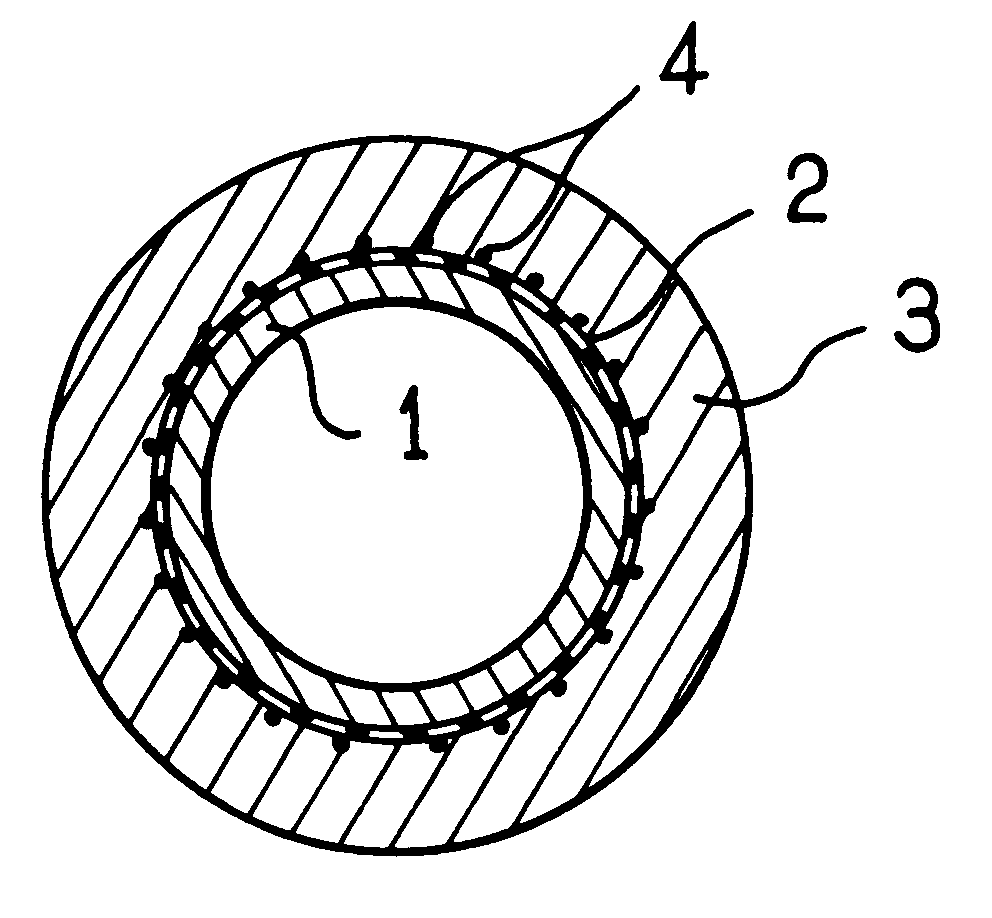Multilayer hose for transporting chemicals having a high solvent content
- Summary
- Abstract
- Description
- Claims
- Application Information
AI Technical Summary
Benefits of technology
Problems solved by technology
Method used
Image
Examples
Embodiment Construction
The method of manufacturing each of the variant embodiments of the hose of the invention is a well known coextrusion technique. The hose of FIG. 1 includes an inner layer 1 of an ORGALLOY type polyamide / polyolefin alloy. The thickness of said layer lies in the range 0.3 mm to 1 mm. The layer is surrounded by a thin layer of polyurethane and more precisely of polyurethane ester having a thickness of about 0.2 mm and which is the compound offering the best qualities for joining the inner layer of ORGALLOY to the outer layer 3 which is a polyvinyl chloride (PVC). The polyvinyl chloride has a thickness adapted to the inside diameter of the hose, e.g. lying in the range 1 mm to 5 mm. The plasticized PVC may optionally be cellular.
Before the PVC is extruded onto the layers 1 and 2, a wire reinforcing covering 4 of the wound round, braided, or knitted type is disposed, for example, on the layer 2. The function of this structure is to make the hose withstand internal pressure. Although in t...
PUM
| Property | Measurement | Unit |
|---|---|---|
| thickness | aaaaa | aaaaa |
| thick | aaaaa | aaaaa |
| pressures | aaaaa | aaaaa |
Abstract
Description
Claims
Application Information
 Login to View More
Login to View More - R&D
- Intellectual Property
- Life Sciences
- Materials
- Tech Scout
- Unparalleled Data Quality
- Higher Quality Content
- 60% Fewer Hallucinations
Browse by: Latest US Patents, China's latest patents, Technical Efficacy Thesaurus, Application Domain, Technology Topic, Popular Technical Reports.
© 2025 PatSnap. All rights reserved.Legal|Privacy policy|Modern Slavery Act Transparency Statement|Sitemap|About US| Contact US: help@patsnap.com


